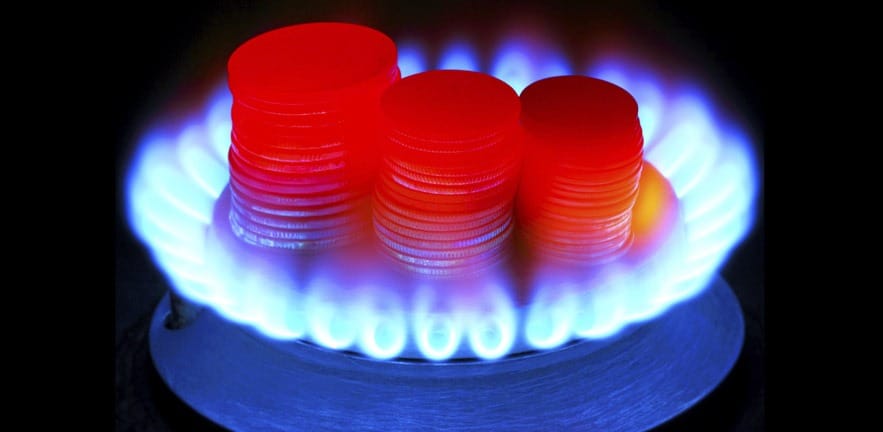Framework for calculating the ‘hidden’ investment risk of fossil fuel companies outlined in paper co-authored at Cambridge Judge Business School.

Investors have long known that fossil fuel companies enjoy an “implicit subsidy” in that such firms don’t pay for economic damage their products cause society, the paper says, and this poses an investment risk should this subsidy be withdrawn or reduced through regulation or imposition of a carbon price. The International Monetary Fund calculated that in 2011 this implicit subsidy amounted to about $800 billion globally.
A new “simple and transparent” framework developed in the research paper calculates these hidden fossil fuel subsidies, by company, so investors can compare risk levels at individual energy producers.
This methodology shows for the years 2008 through 2012 that the implicit subsidy exceeded post-tax profits (averaged over five years) at all 20 of the largest oil, gas and coal producing companies studied – and that there was “substantial variation between companies within the same fuel type.” For pure coal companies, the implicit subsidy even exceeded total revenues which are a “generous” accounting of the contribution of the companies to society including employment, taxes and supply purchases.
“There is already concern amongst policy makers about direct subsidies for fossil fuels,” concludes the research paper. “The analysis in this paper suggests the subsidy is actually much greater than perceived.”

The working paper – entitled “Quantifying the implicit climate subsidy received by leading fossil fuel companies” – was co-authored by Chris Hope, Reader in Policy Modelling at Cambridge Judge Business School, Paul Gilding and Jimena Alvarez*. Hope developed the PAGE integrated assessment model on climate change, which for many years has been used by international agencies and governments to assess the social cost of carbon.
The new research paper calculates the implicit subsidy of emissions by using the mean estimate for emission costs in the current PAGE09 model, and the paper estimates levels of emissions based on production values from Oil & Gas Journal reports and companies’ annual reports.
The 20 companies studied represent the great majority of fossil fuel production from companies with publicly available emission data and financial results. Taken together, they were responsible for 25 per cent of fossil fuel emission in 2008 and 23 per cent in 2012, had collective revenues of $3.032 trillion in 2008 and $3.181 trillion in 2012, and posted after-tax profits of $248 billion in 2008 and $275 billion in 2012.
While “highly profitable” with after-tax margins of 8.2 per ceny in 2008 and 8.6 per cent in 2012, these figures do not account for the “hidden economic cost to society” from CO2 emissions from these companies, the paper says.
“This hidden or externalised cost is an implicit subsidy and accordingly represents a risk to those companies,” the paper says. “There is a reasonable chance that society will act to either reduce this societal cost by regulating against fossil fuel use or recover it by imposing carbon prices. Investors are increasingly focused on this risk and seeking to understand and manage it.”
The paper is designed to assess the particular investment risk relating to implicit subsidies and is not intended as a broad measurement of the energy companies’ potential future liabilities.
While there have been several widely varying estimates over the past decade of the Social Cost of CO2 (SSCO2), which measures the impact of one ton of CO2 emitted into the atmosphere, the paper uses an estimate of $105 per tonne of CO2 in 2008 – the mean estimate from business-as-usual emissions in the default PAGE09 model, one of three models used by the U.S. Environmental Protection Agency.
Using this value for SCCO2, the model estimates the hidden economic cost of the 20 large energy companies at $755 billion in 2008 and $883 billion in 2012, or collectively several times post-tax profits (with a range among companies of $1 to $8 for each dollar of company after-tax profit).
“We accept the range of uncertainty in measuring the net cost to society of a tonne of carbon dioxide emissions but note that uncertainty goes both ways – the cost could be higher than our mean estimate as well as lower,” the paper says.
For investors, the new model provides a “useful guide” to manage exposure to climate change given that “the difference between companies is considerable.” For policymakers, there has for decades been an often-assumed choice between climate protection and creation of economic value, but the paper provides data to help them “judge this more accurately and to differentiate between companies and fuel types.”
The full list of energy companies studied: Exxon Mobil; BP; Royal Dutch Shell; ConocoPhillips; Coal India; Peabody; Shenhua Group; China Coal Energy; Consol Energy; Gazprom; Pertamina; Statoil; BHPB; Lukoil; ENI; Occidental Petroleum; Total; Petrobras; Petrochina, and Chevron.
* The research paper was co-authored by Chris Hope, Reader in Policy Modeling at Cambridge Judge Business School. His co-authors are Paul Gilding, Fellow at the Cambridge Institute for Sustainability Leadership, and Jimena Alvarez, a former MPhil student at the University of Cambridge whose dissertation using the PAGE09 model was supervised by Chris Hope.

